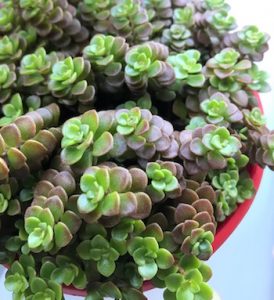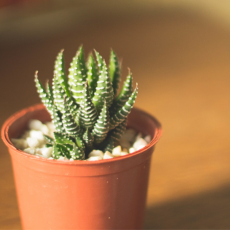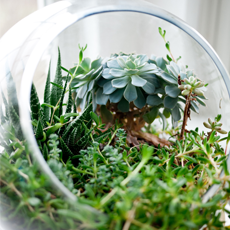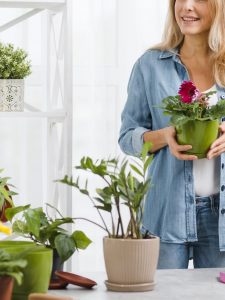 Swiss Cheese Plants (Monstera Deliciosa) originate from the humid tropical rainforests of Mexico. In their natural habitat they grow up tree trunks in search of light, but in pots they are slower growing. Their common name comes from the slits in their dark green leaves. These plants are a favorite of ours as they are peculiar looking and make a great statement piece in any room but best of all they are easy to care for.
Swiss Cheese Plants (Monstera Deliciosa) originate from the humid tropical rainforests of Mexico. In their natural habitat they grow up tree trunks in search of light, but in pots they are slower growing. Their common name comes from the slits in their dark green leaves. These plants are a favorite of ours as they are peculiar looking and make a great statement piece in any room but best of all they are easy to care for.
Light – The Swiss Cheese Plant prefers bright indirect light. It will not tolerate direct sunlight and the leaves may begin to yellow. Not enough light can slow growth down. A bright well lit living room or bedroom would be an ideal spot.
Water – Water weekly, or whenever the top 1 inch of soil feels dry, and allow it to drain completely.
Humidity – Prefers humidity and a warm environment. Never let soil dry completely. Mist leaves with a spray bottle.
Fertilize – These plants like to be fertilized once a month with a diluted solution during the growing seasons (summer + spring).
Top Three reasons why we love the “Swiss Cheese Plant”
1. It is easy to grow – it virtually thrives on neglect.
2. Its glossy, Swiss-cheese like leaves make a naturally beautiful statement in any style of home.
3. They can be grown big or small making them perfect for both tiny apartments or large open-plan homes.
Looking for a “Swiss Cheese Plant” Gift? Visit our Shop to see our range.

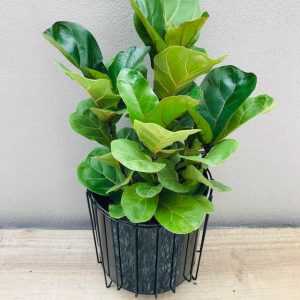 The Fiddle Leaf Fig is rapidly becoming Australia’s most popular indoor plant. It has attractive, big glossy leaves and is a low maintenance evergreen plant that is troubled by few pests. A truly beautiful feature piece for the home or office. It is easy to see why it has grown so quickly in popularity. Follow our tips below to keep your fiddle leaf fig fit as a fiddle.
The Fiddle Leaf Fig is rapidly becoming Australia’s most popular indoor plant. It has attractive, big glossy leaves and is a low maintenance evergreen plant that is troubled by few pests. A truly beautiful feature piece for the home or office. It is easy to see why it has grown so quickly in popularity. Follow our tips below to keep your fiddle leaf fig fit as a fiddle.